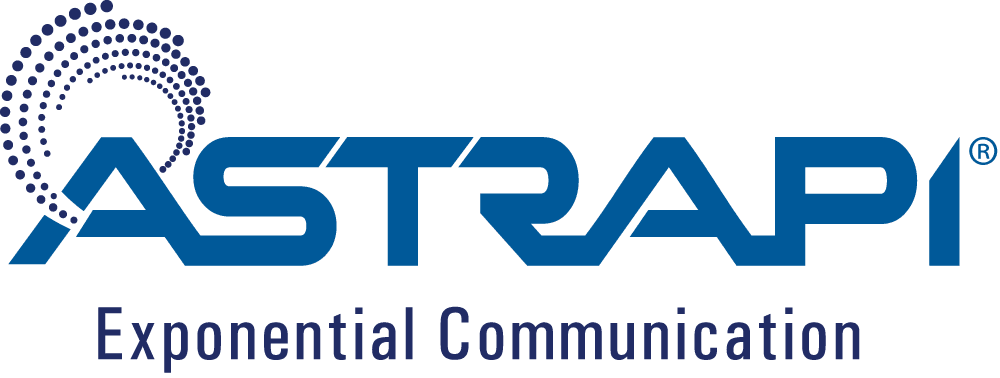FOR IMMEDIATE RELEASE
Astrapi Contact: Andy Roscoe
Direct email: [email protected]
TSR Research Lab Contact: Pablo Angueira, Ph.D.
Direct email: [email protected]
Astrapi Corporation and the TSR Research Lab to test, demonstrate and quantify the benefits of spiral-based modulation in a variety of communication systems.
Washington, D.C. and Bilbao, Spain, February 22, 2016. Astrapi Corporation and the TSR Research Lab today are pleased to announce a joint research partnership to explore spiral-based modulation. Astrapi and TSR first met in the National Association of Broadcasters Futures Lab Park in 2015 leading to a research partnership to design, implement and test spiral-based radio platforms. These platforms will provide for a testing environment to demonstrate and quantify the benefits of spiral-based modulation in a variety of communication systems.
“This partnership represents a significant technical milestone,” said Dr. Jerrold Prothero, Astrapi’s CEO and founder. “We were delighted to meet Dr. Angueira and members of his team at NAB 2015 and especially pleased with the enthusiastic reception for our spiral-based modulation. The establishment of a research program focused on unlocking the power of spiral-based modulation at such a prestigious academic institution is an important step in the dissemination of research on this technology. The TSR lab is at the point of the spear in researching issues related to the ATSC 3.0 standards, LDM, and other approaches confronting the broadcast industry.“
Pablo Angueira, Ph.D., Department of Communication Engineering, Bilbao Faculty of Engineering (UPV/EHU) stated, “We believe that spiral-based modulation represents an important and unexplored area of communications. The TSR Research Lab is uniquely positioned to discover the potential of this technology, and to demonstrate how this significant departure from traditional communications theory can result in substantial gains for communications implementations. Unlike traditional approaches, spiral-based modulation shows the potential to achieve capacity increases through the application of computational resources.”
The Spiral Modulation Research Partnership, based at the TSR Research Lab, University of the Basque Country (UPV/EHU) in Bilbao, Spain, will explore how spiral-based modulation can increase transmission rates, mitigate interference, facilitate synchronization, and combat phase impairments.
ABOUT Astrapi Corporation
Astrapi is the pioneer of spiral-based signal modulation, which opens an unexplored area for innovation at the core of telecommunications. Based on a generalization of Euler’s formula, the foundational mathematics for telecom, Astrapi provides fundamentally new ways to design the symbol waveforms used to encode digital transmissions. By applying new mathematics to signal modulation, Astrapi is able to improve the trade-off between the four fundamental parameters in telecommunications: bandwidth, signal power, data throughput, and error rate. The resulting efficiency translates into higher spectral performance with more bits available at a lower cost.
ABOUT TSR Research Lab at The University of the Basque Country (UPV/EHU)
The Signal Processing and Radio communication Group (TSR) is part of the Department of Communications Engineering at the University of the Basque Country (UPV/EHU). The TSR laboratory is located at the Faculty of Engineering in Bilbao, Spain. The Faculty of Engineering in Bilbao (ETSI Bilbao), founded in 1897, is one of the oldest centers in the University of the Basque Country UPV/EHU. During its long history, the engineers it has trained have decisively collaborated to progress and develop our industry, building up a group of qualified and reputed engineers, with employment rates of almost 100%.
The University of the Basque Country (UPV/EHU; Spain), the Communications Research Centre (Canada) and the Electronics Telecommunications Research Institute (ETRI; Korea) partnered under the Advanced Television Systems Committee, Inc. (ATSC) umbrella at the NAB show to demonstrate Layered Division Multiplexing (LDM) technology. LDM uses spectrum overlay techniques and signal cancellation to transmit two independent signals using a single 6 MHz TV channel. The ATSC is an international, non-profit organization developing voluntary standards for digital television. The ATSC member organizations represent the broadcast, broadcast equipment, motion picture, consumer electronics, computer, cable, satellite, and semiconductor industries. ATSC is working to coordinate television standards among different communications media focusing on digital television, interactive systems, and broadband multimedia communications.
http://www.ehu.eus/tsr_radio/
# # # # # #
